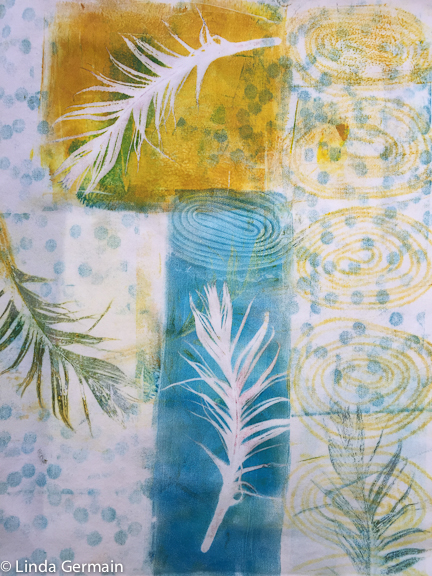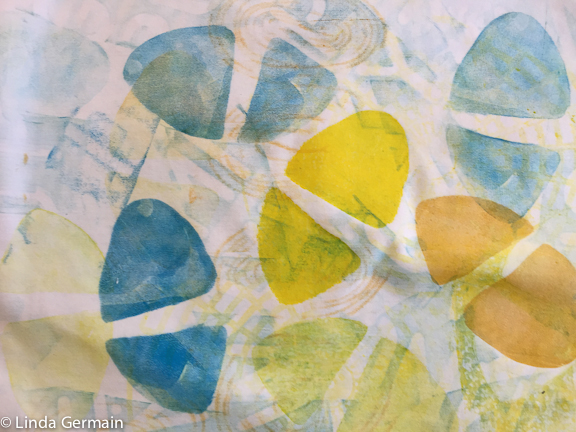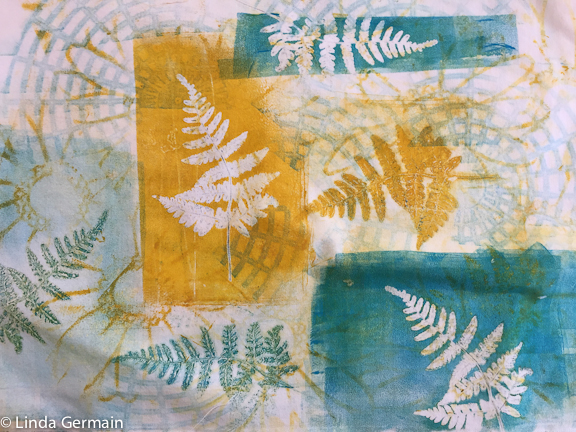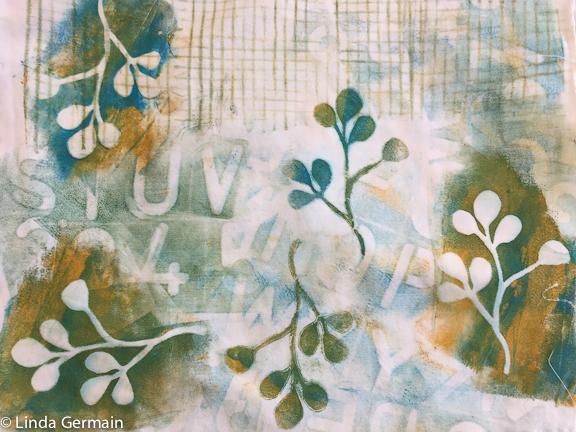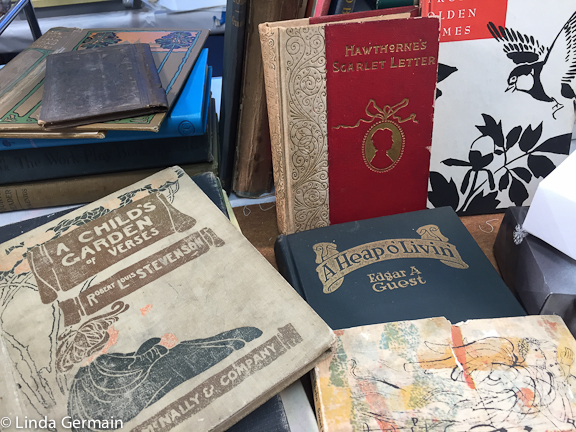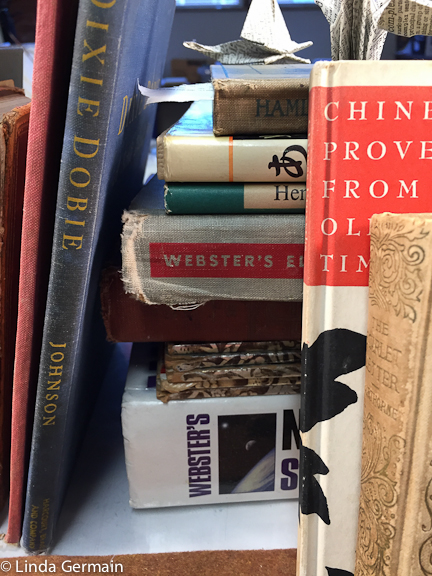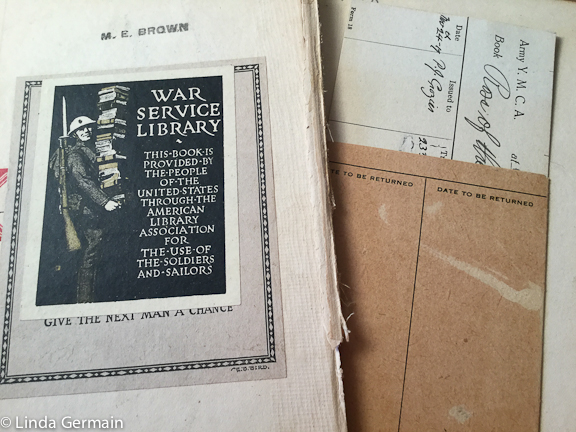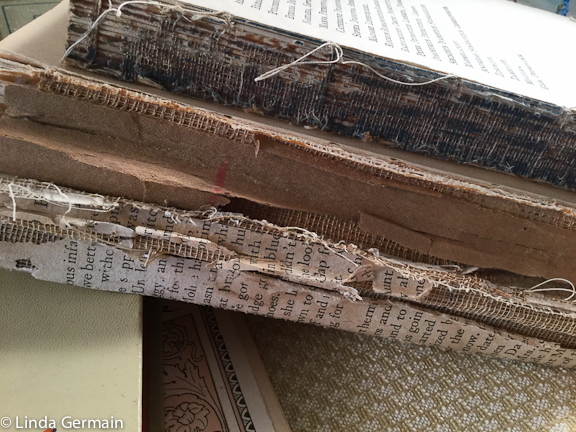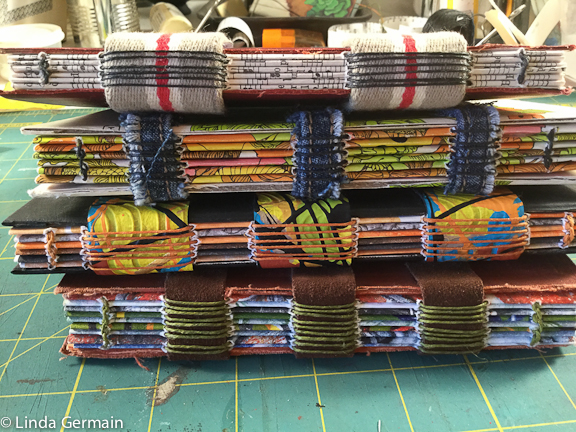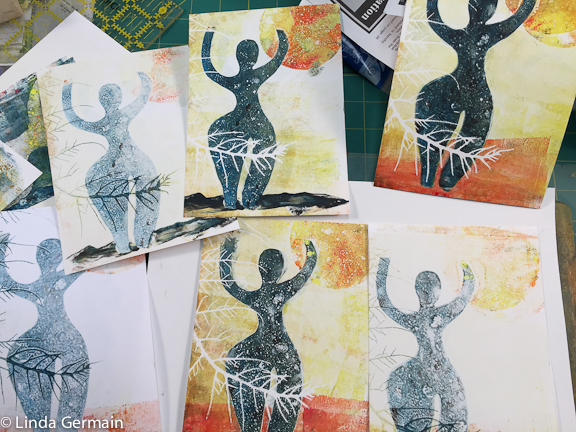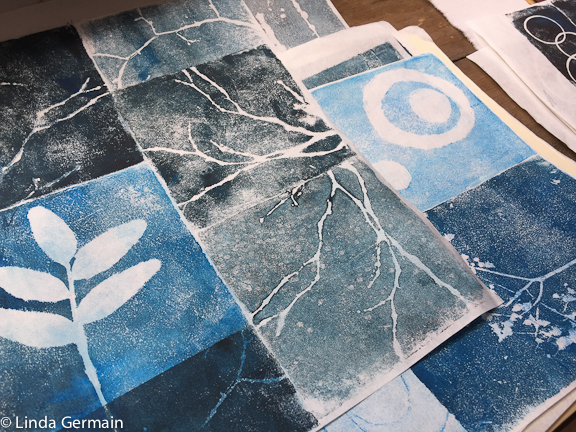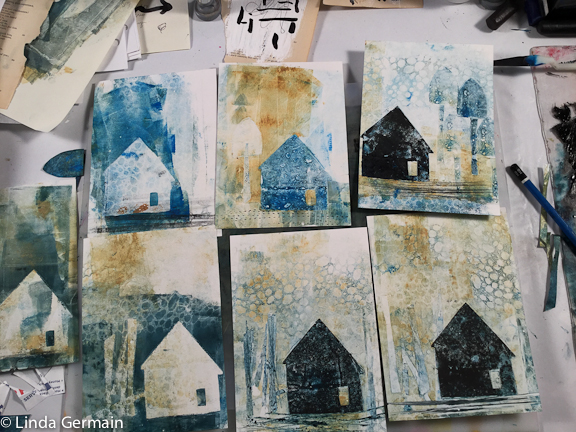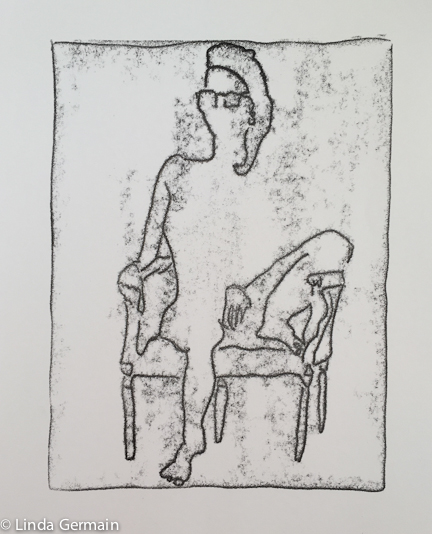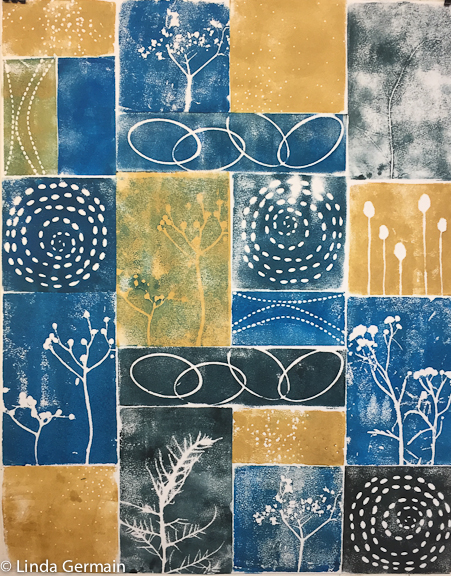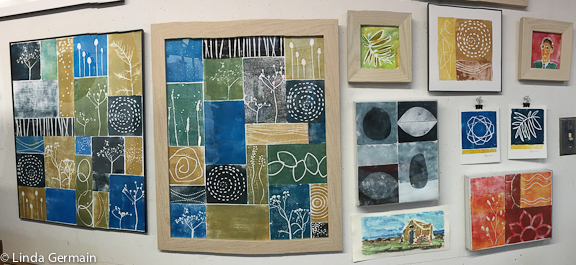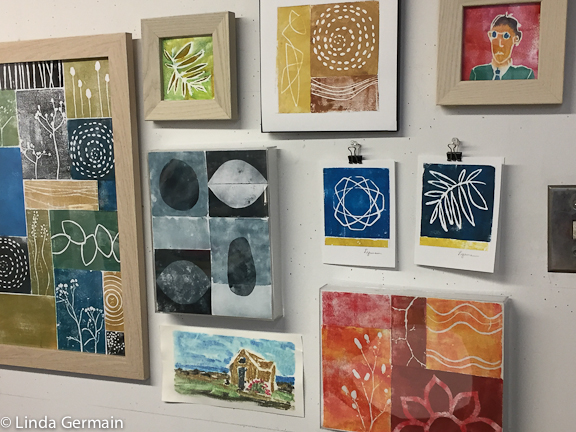What is possible – monoprinting fabric
Today I am playing and discovering the different kinds of marks that are possible with the gelatin plate, stencils, mark making tools and inks.
A lot happens very quickly when I roll out the ink and lay down stencils. The challenge is to transfer marks before the ink is too dry.
There is ink on the brayer and on the plate that can be used to make marks on the fabric. The skill develops the more I understand where to place what kinds of marks to make pleasing prints.
For example in the print above:
- the white ferns are made with a masking stencil over a layer of ink.
- the blue and yellow ferns are made with the ink left behind/under the masking stencil
- the background marks were made with brayer rubbings
So when playing with printing on fabric, skill develops as awareness grows about the actions that make certain types of impressions. This can be challenging for folks who like to be in control or make predictable and repeatable mark.
The marks above are similar but not the same. The happy surprises are what I love about gelatin printmaking. I also love:
- easy clean up
- low tech tools
- non- toxic inks
- able to print at home
- fun to share with friends!
- lovely details with just hand pressure
- no press needed
- fast and spontaneous
If you are interested in some guided discover and playful printmaking with the gelatin plate and fabric then check out the details of the online printmaking workshop, Monoprinting on Fabric. Class starts soon.
What is possible – monoprinting fabric Read More »
